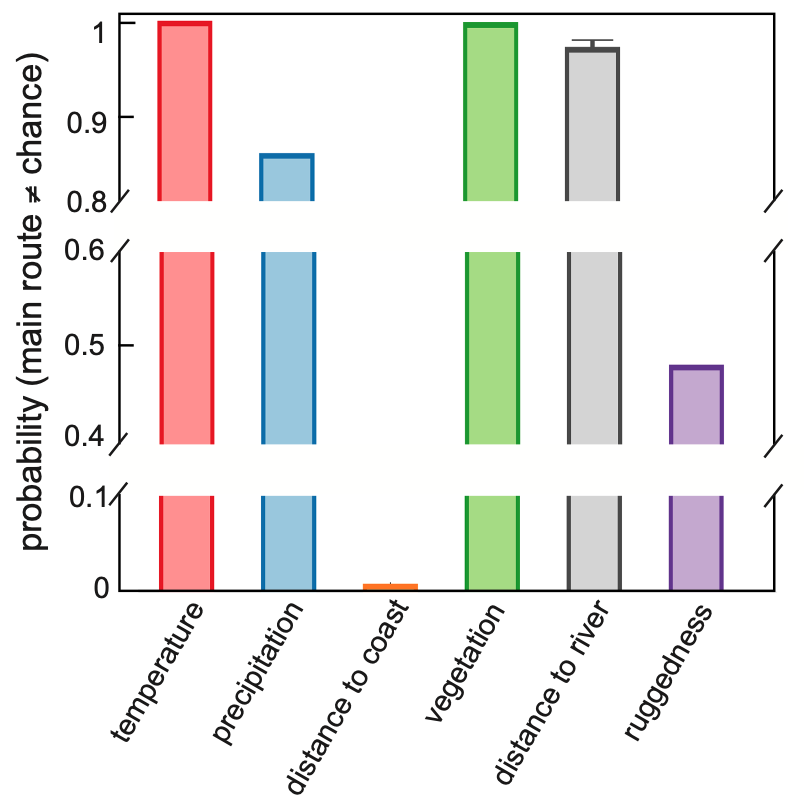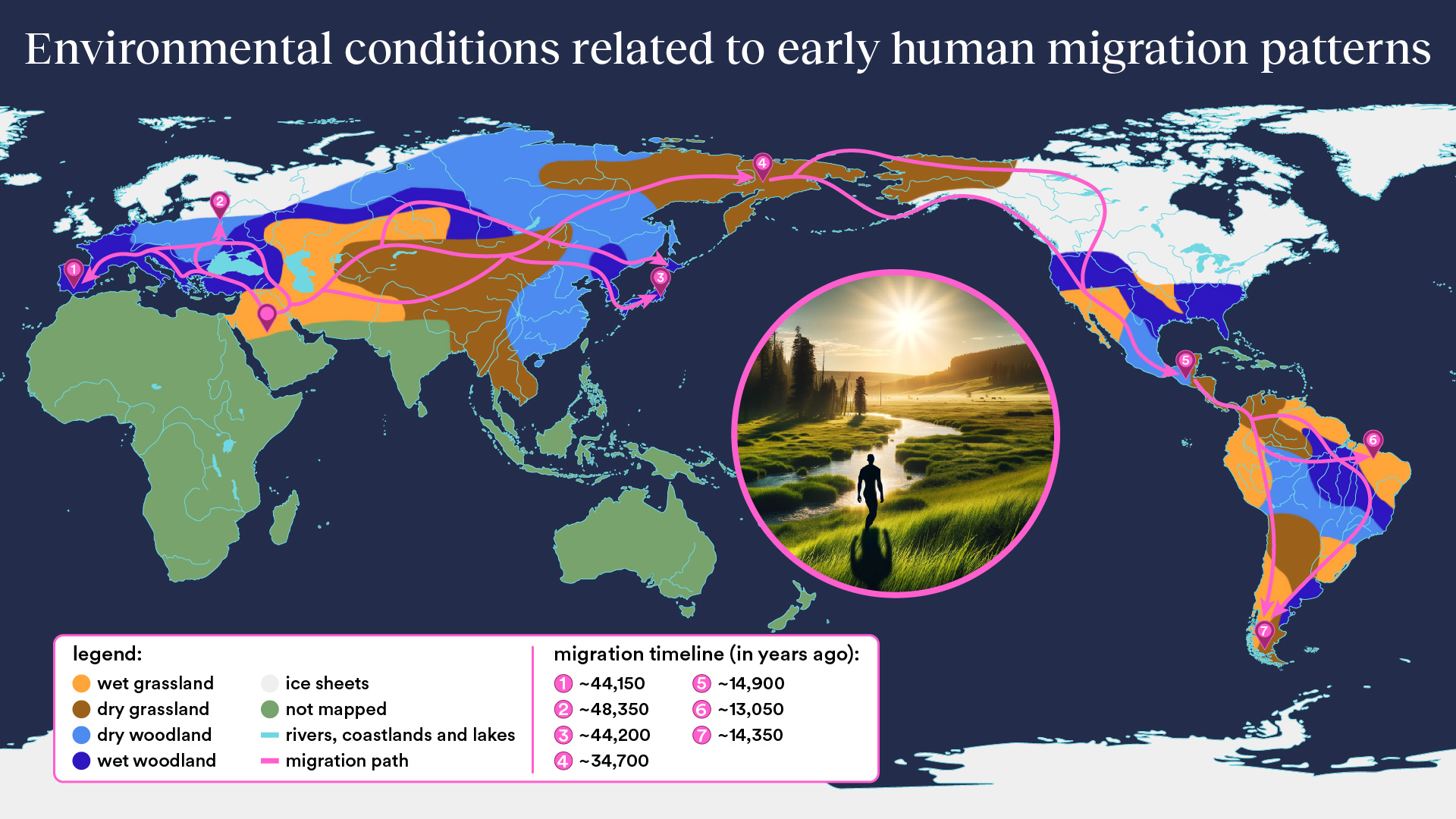Ancient journeys: how climate and the environment shaped the global expansion of early humans
Published in Social Sciences, Earth & Environment, and Ecology & Evolution

Examining so-called ‘environmental determinism’ at the global scale requires two main inputs: identifying the most likely migration routes among many thousands of possibilities, and determining what makes such routes more favourable compared to others.
Archaeological evidence and more recently, large-scale genetic comparisons, are the tools most applied to reveal past routes of human migration. But in isolation, these data are often too sparse and incomplete, and can only reveal potential routes associated with high uncertainty. Not only does such uncertainty challenge the identification of continuous, regional migration patterns, it has been nearly impossible to test how the environment might have influenced the choice of different routes.
While some modelling approaches have explored migration patterns, they often rely on untested assumptions about ancient demographics and ecological constraints. Such models also attempt to validate predictions with sparse archaeological data, but these are constrained again by the high associated uncertainty.
The next obvious step was therefore to combine both archaeological evidence and genetic data to overcome the problem of hyper uncertainty. But even when standardising these two different data types, we still faced the challenge of how to deal with patchy spatial coverage and sampling biases in the available data.
Fortunately, we had recently developed a mathematical technique to map the arrival of the ancestors of Indigenous peoples across south-eastern Australia — a region covering an area approximately equivalent to the entirety of western Europe. This technique accounts for the uneven sampling of point-based dated material and corrects for spatial biases.
At the global scale, we first generated two maps to which we applied this technique: one estimating the timing of Homo sapiens' arrival across Eurasia and the Americas based on radiocarbon-dated archaeological data, and another one based on the fixation index of mitochondrial DNA that represents the genetic distance between populations at different locations. We then designed a second mathematical procedure to identify trajectories across these maps that minimised differences in both arrival timing and genetic distance along the potential pathways.
The outcome was the first global-scale prediction of human migration pathways that avoided the guesswork of previous approaches. We identified several potential migration trajectories for each region of Eurasia and the Americas, ranking them from most- to least-likely. We then analysed six environmental variables (see figure below) generated at the reconstructed timing of arrival based on a hindcasted atmosphere-ocean general circulation model to determine which climate and environmental conditions best explained the differences between the most- and least-likely trajectories.

The emerging results were fascinating and corroborated several hypotheses arising from environmental determinism — our first ancestors chose to travel primarily through warm, humid areas with a mix of forest and grasslands near rivers. While the relative importance of environmental conditions varied across regions, we now have the empirical support for how the environment influenced where the first explorers migrated.
A closer regional look shows that in Europe, humans likely first spread from the Fertile Crescent through the Caucasus Mountains into Scandinavia around 48,300 years ago and into Western Europe around 44,100 years ago, following warmer and wetter conditions. In northern Asia, migration routes followed major rivers to cope with harsher climates, reaching Beringia (a now-submerged land bridge between Siberia and Alaska) around 34,700 years ago. In North America, humans initially migrated along the Pacific coast around 16,000 years ago and moved inland around 3,000 years later through the ice-free corridor of the Mackenzie River basin.

Incorporating new modelling methods with the latest climatic, archaeological, genetic and environmental data provides insights into how ancient humans moved and adapted across vast continents tens of thousands of years ago. Our work underscores how climate and ecology shaped human prehistory, highlighting biodiversity's role in human survival and mobility to thrive in new environments for thousands of years. The current biodiversity crisis is now compromising our ability to thrive, and despite our advanced technologies, our future is uncertain in the face of global environmental decline.
This Behind the Paper post is co-authored by Frédérik Saltré, Corey J. A. Bradshaw, Bastien Llamas and Thomas Higham. This research was supported by Australian Research Council Centre of Excellence for Australian Biodiversity and Heritage.
Follow the Topic
-
Nature Communications

An open access, multidisciplinary journal dedicated to publishing high-quality research in all areas of the biological, health, physical, chemical and Earth sciences.
Related Collections
With Collections, you can get published faster and increase your visibility.
Women's Health
Publishing Model: Hybrid
Deadline: Ongoing
Advances in neurodegenerative diseases
Publishing Model: Hybrid
Deadline: Dec 24, 2025


Please sign in or register for FREE
If you are a registered user on Research Communities by Springer Nature, please sign in